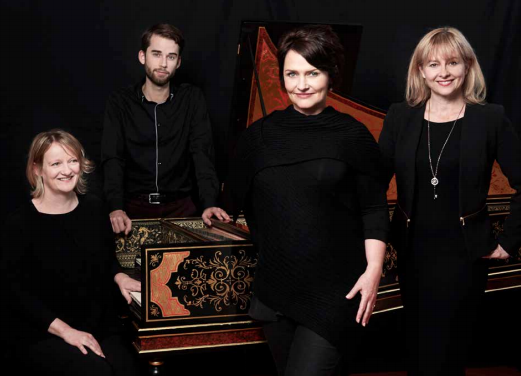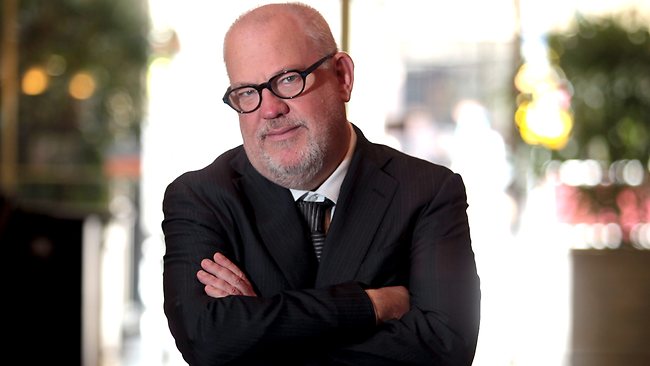Limelight speaks to Richard Mills about 2016’s gastronomic delights, circus thrills, and bel canto masterworks.

Opera is an art-form that often suffers from an image problem. Viewed as old fashioned, out of date and prohibitively expensive, persuading the uninitiated to dip their toes into the rich artistic waters of opera can be a challenge. The Artistic Director of Victorian Opera, Richard Mills, is a man on a mission to drag the art-form out from behind the dusty velvet curtain and into the 21st Century. “This company is brave,” he says with a palpable note of confidence in his voice. “If the art form doesn’t reinvent itself and change it will die, because anything that doesn’t reinvent itself stagnates. So it’s our desire for renewal, for relevance, for engagement that drives our desire to do new and interesting work.” In 2016 new opera rubs shoulders with favourites of the repertoire, including a new production of Lucia di Lammermoore starring coloratura star Jessica Pratt, in a season of “different dreams,” designed to surprise and ensnare the senses.
 Richard Mills
Richard Mills
Australia’s youngest large-scale opera company, which celebrates its tenth anniversary in 2016, has a history of pushing boundaries, but with its new season Victorian Opera is truly pinning its colours to the mast, as radical, cutting edge innovators committed to transforming perceptions of opera. Of its eight productions next year five are new works, and one more is an Australian premiere. It’s an impressive ratio, however Mills may have an advantage when it comes to seeking out the best new work. In addition to curating the 2016 season he has also written an opera for it himself; a new community opera based on the children’s fable, The Pied Piper. His affinity for championing the new, and his ability to speak the same language as fellow composers, has led Mills to a particularly hands-on approach in his role as Artistic Director. “Part of my job is to curate the new work and to enable it and to help it, and that’s something I take very seriously,” he shares. “The composers and librettists who work with us are up for that journey. They realise that a good editorial hand can be a great assistance in bringing a project to the best possible outcome.”
 The cast of Voyage to the Moon
The cast of Voyage to the Moon
The selection of original operas on offer next year is not only about presenting brand new music. Two of 2016’s offering have been carefully constructed using existing repertoire. Firstly in February a new co-production with Musica Viva, Voyage to the Moon, will use music from the Baroque. This Pasticcio technique isn’t a new concept, moreover it draws on a rich tradition of operatic pastiches which were popular in the 18th Century, with notable examples of the genre created by Handel, Gluck and even J.S. Bach. “We’re replicating this past practice to create something that’s appropriate for a national tour with Musica Viva, but in a way we’re taking the view of an 18th Century impresario, who may have commissioned something similar 350 years ago,” Mills says. Then in August, Victorian Opera will take a short break from their usual home at the Playhouse of the Arts Centre Melbourne, to join Circus Oz at the Palais Theatre for Laughter and Tears, directed by Olivier Award-winner Emil Wolk. This production is a celebration of the Italian theatrical craft of Commedia dell’Arte, a quirky and charismatic hinterland between pantomime and a masquerade which dates back to the 16th Century. This evening of musical and acrobatic wonders will feature masterworks of the Italian repertoire spanning almost three centuries including the madrigal comedies of Vecchi and Banchieri, as well as Leoncavallo’s I Pagliacci. The juxtaposition of the two hemispheres of this new evening celebrating Italian culture hopes to throw new light on Leoncavallo’s opera. “This show is an attempt to contextualise the elements of commedia dell’arte in I Paggliaci,” Mills says. “The artifice of I Paggliaci in both instrumentation and theatrical construct, to me, demand an exploration and amplification in the way one can present the opera, and that’s what we’ve intended to do with this project.”
As well as reviving the artistic practices of the past Victorian Opera will be reaching out to the future, championing bold new theatre technology used by the company this year to offer a new dimension to Wagner’s early masterpiece The Flying Dutchman. Once again VO will be partnering with Deakin Motion.Lab to create dynamic 3D scenery for the Australian premiere of Virgil Thomson and Gertrude Stein’s surreal masterpiece Four Saints in Three Acts. Described by Mills as having a “naive charm,” this strange but engaging piece, which premiered 82 years ago on New York’s Broadway, is a crucible for a quirky and mercurial hodgepodge of musical aesthetics and a stream-of-consciousness libretto. “For all its seeming randomness it does have a sense of architectural purpose in that it does, as Aristotle says of all theatre, have a beginning, a middle and an end. It’s just that the conventions used to achieve it in this piece are slightly different,” Mills says of the opera, which tells the story of a collection of 18th Century Spanish saints. Following in this vein of technological integration, Victorian Opera will also be staging its first entirely digital production: a live streamed performance to coincide with the Winter Solstice in July, The Darkest Night. “I think it’s important that an opera company keeps up with the times, and that in the early 21st century means keeping up with the whole apparatus of social media and interconnectivity generally,” says Mills. “It’s something we’re happy to embrace as a challenge, because what it does do is lead people to the joy of discovery of something new and that’s what we’re very much about as a company. The joy of discovery is central to our mission.”
 Paul Grabowsky
Paul Grabowsky
Like many opera companies nowadays, Victorian Opera has embraced musical theatre as a medium to entice a new audiences to the opera theatre. The past three years have seen a highly successful trilogy of Sondheim musicals, but following this hat-trick of triumphs for the company Mills wants to add to repertoire of new musical theatre. To this end Victorian Opera has commissioned a work by Jazz icon Paul Grabowsky and Logie Award-winning television presenter Steve Vizard, Banquet of Secrets, which tells the story of four friends who meet for dinner party, but when they decide to reveal secrets about themselves the evening takes an unexpected turn. However in typical fashion Victorian Opera will be giving the audience a new experience with this performance, partnering with the Melbourne Food and Wine Festival and celebrity chef Philip Mouchel to (literally) add some unexpected flavours to the production. This is about more than just looking for ways to shake up the art-form, Mills believes. “In many ways you can liken the experience of opera to a banquet – it engages the senses, it has a structure and it’s an occasion for affirming, if you like, a community that engages in this transforming art form; a community that converses with itself, as happens in good theatre. Good theatre is a conversation about what it is to be fully human.”
To cater to the tastes of more tradition-minded opera lovers, Victorian Opera will also present Donizetti’s epic tragedy Lucia di Lammermoore, starring one of the world’s most acclaimed bel canto sopranos, Jessica Pratt. This engagement is not only a major coup for Victorian Opera, but marks the beginning of an ongoing partnership between Pratt and the company that will see her returning in future seasons. In fact 2016 will see a number of Australia’s most talented women in opera appearing on stage for VO, including Emma Matthews and Sally-Anne Russell in Voyage to the Moon, Antoinette Halloran, who wowed audiences earlier this year in VO’s Sweeney Todd, in the world premiere of Banquet of Secrets, and bright young talent Emma Pearson in Laughter and Tears.
Victorian Opera’s 2016 Season is now on sale.











Comments
Log in to join the conversation.